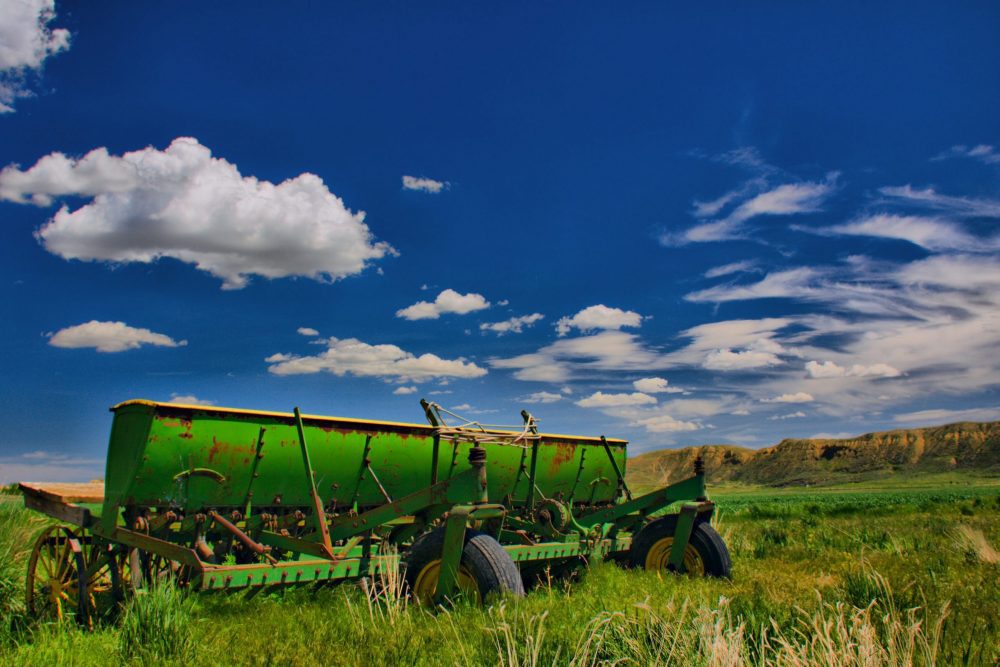
Photo by Lewis Kelley
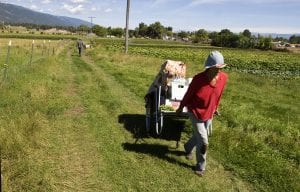
Luci Breiger of Lifeline Produce hauls vegetables and herbs to be washed and prepped for the Missoula Farmers’ Market. Photo by Jeremy Lurgio
When I introduce myself to affordable housing advocates from other parts of the country, I get a lot of puzzled looks. Montana has an affordable housing problem? You’ve got to be kidding. As a staff attorney for a statewide community land trust in the Treasure State, I can attest to the challenges we face trying to offer housing and land for people of limited means.
Housing struggles in Montana parallel those felt in urban areas as wealthy non-residents with cash in hand buy up what would be affordable homes, flip them, and farm them out as Airbnbs, or use them as rarely visited second homes. Home prices have risen by nearly 40 percent in Montana since 2011, but the median household income has only increased by about 10 percent over that same time, according to a 2018 study by the University of Montana’s Bureau of Business and Economic Research. The median home price in Missoula was 5.81 times the median household income in 2018, compared to a national average of 3.56. These factors paint a picture: people who live in Montana cities and earn Montana wages have more difficulty buying homes than low- and moderate-income residents in Denver, Seattle, and Miami. But mention a farmland affordability crisis in Montana and people don’t believe it. What about all that open space?
Montana is one of the top five states that lost the most active farmland between 2012 and 2017, according to the 2017 Census of Agriculture. The same census found that new farmers are on the rise, while a large percentage of current farmers are approaching retirement age.
There are indeed parts of the Montana countryside that are still wide open. As you drive east from Missoula to Great Falls on Highway 200 you see rolling hills, snow-capped peaks, and sagebrush plains. West on Interstate 90 from Billings there are cover crops for miles. And yet nonindustrial farms are disappearing at an alarming rate in Montana just as they are across the country. “The economic decline over the last five years is forcing many farmers out of business, continuing the trends of farm consolidation and rural economic degeneration we’ve seen for many years,” said Roger Johnson, president of the National Farmers Union, in a press release on the results of the 2017 census. In the U.S., more than 14 million acres of active farmland were lost to development between 2012 and 2017. Family farmers and ranchers are unable to compete with giants like Monsanto-Bayer and Dow-Dupont that dominate big agriculture in Montana; long distances between producers and their markets raise prices; millions of acres of federal, state, and private land has been set aside for conservation; and out-of-state buyers and developers compete for land near resort communities.
In order to develop more creative solutions to the complex issues of farmland accessibility and farm viability in Montana, a group of farmers, ranchers, lenders, finance professionals, nonprofits, and land trusts gathered in early February 2019. During the tiny window of time between growing seasons, year-end financial planning, tax season, calving, and lambing, we convened at a historic hot springs resort in Pray, Montana. Trust Montana, the organization I work for, partnered with the Community Food and Agriculture Coalition to develop the Montana Summit on Agricultural Finance. The summit provided an opportunity for Montanans to address a crisis that, unlikely as it may seem to outsiders, is very real in Montana.
We began by building a network of stakeholders across the state with a short-term goal of meeting during the 2019 summit to identify at least three finance tools, existing or in development, that farmers could get behind. During the event we formed committees that would spend the next several months further developing the tools before we returned to our professional silos. Our ultimate goal? To increase opportunities for financially challenged farmers and ranchers to secure land tenure and operate viable farm businesses.
As a statewide community land trust (CLT), Trust Montana works to apply the CLT model to the landscape as one part of the solution to the farmland crisis. Farm CLTs are not new, but they are not common either. African-American sharecroppers developed the first CLT, New Communities, in the early 1970s as a solution to the racist policies and lending practices that kept families of color from owning land. At New Communities, farmers purchased their own homes and pooled their capital to buy the land as a group. The story of how white people in the community actively sabotaged the enterprise and the 30-year battle that ensued is best told by the founders themselves.
In the 1980s, affordable homeownership in cities replaced rural areas as the focus of the CLT movement, and interest in the model continues to grow in communities at risk of gentrification. But in the last few years, with the average U.S. farmer approaching retirement age and farmland being sold off at a fast pace (up to 400 million acres over the next 20 years, according to Agrarian Trust), communities around the country are once again looking at the CLT farm model, eager to use this flexible tool to create permanent affordability for low- and moderate-income farmers and ranchers.
Montana Farms—Needs and Challenges
The issue that rose to the top of the list at the summit was access to capital. For young people, the biggest barrier to success is the high cost of land, whether they are trying to buy from family or through an arms-length transaction. For those at the end of their careers who own land but are cash-poor, a top challenge is financing retirement without selling to developers. For mid-career farmers, the challenge is access to operating capital. It also became clear that Montana farmers want to find a way to reward the nonmonetary values that farming brings to a community: environmental stewardship, stronger local economies, soil-building, carbon sequestration, healthy food, and self-reliance. Ultimately the conversation came back to how to pay for the initial costs so that farms can stay affordable in perpetuity.
The Search for Creative Tools
In the end, over 50 attendees braved icy roads and temperatures of 10 below zero to spend a day and a half at the summit, talking across professional divides to brainstorm solutions. The tools that rose to the top: rural investment cooperatives, social capital investment, and community land trusts.
Rural Investment Cooperatives
Cooperatives have been around since the 19th century, and for good reason: by pooling their resources, people of modest means can accomplish together what they are unable to do alone. For farmers in Montana, this means applying the state’s cooperative statutes to overcome today’s agricultural financial challenges. In Montana, cooperatives may capitalize their enterprises by issuing both common and preferred stock that is exempt from federal securities registration and reporting requirements. This cooperative advantage has opened up new possibilities for community investment in local agriculture and the entire local food system.
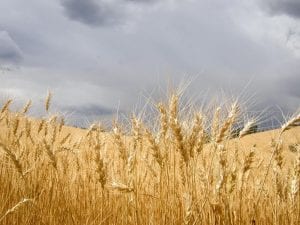
Photo by Laurie Childs
During her presentation at the summit, Cooperative Developer Brianna Ewert from Lake County Cooperative Development Corporation in Ronan, Montana, cited Poudre Valley Community Farms in Colorado as an excellent example of a multi-stakeholder co-op that purchases farmland to provide long-term tenure for farmers. In addition to harnessing the power of the collective to negotiate lower prices for members and increase access to distributors and consumers, what is unusual about Poudre is how it uses the capital from consumers’ and producers’ initial stock investments to purchase farmland—a concept that really got people talking.
Janice Brown, the executive director of the Montana Cooperative Development Center in Great Falls, built upon this concept by introducing Rural Investment Cooperatives (RIC), for-profit associations whose members invest in tangible assets such as farmland, affordable housing, and historic buildings. The RIC would lease its land or equipment assets at favorable terms to increase a farmer’s likelihood of success while not expecting a major return, especially over the short term. Even if they are not wealthy, member-owners of an RIC can help revitalize small rural communities through their patient investment in cooperative stock.
“Although the annual return to each preferred stockholder will be modest—not exceeding the 6 percent threshold established by Montana law—the economic benefits to the community at large should be significant,” said Brown.
This tool makes community investment a viable, exciting option for agricultural finance. Organic farmer Drew Blankenbaker from Lifeline Produce in Victor, Montana, having already dipped his toes in cooperative development research, made the decision at the summit to create an RIC to provide capital for farmers in the Bitterroot Valley—and just like that, the Farmland Investment Company was born. Once incorporated, this RIC will purchase farmland and offer five-year lease-to-own contracts to beginning farmers, allowing them to gain the operational experience necessary to qualify for conventional, Farm Services Association (FSA) financing.
One option for people wanting to invest in an RIC is to designate a portion of their Individual Retirement Account (IRA) funds in local farming and ranching operations. Instead of leaving employee retirement-savings investment choices to large mutual funds or an employer, an individual can specify that they want those funds to go into an RIC.
How RICs work in Montana:
- Each member-owner purchases one share of common stock and is entitled to one vote.
- Purchase of additional shares of nonvoting preferred stock is optional. Members elect a voluntary board of directors to do research into potential investments.
- The cooperative passes capital on to the farm or ranch selected by the board.
- The cooperative charges a fee for dealing with 401(k) tax and investment limit issues, due diligence, and management of funds.
- The typical co-op board is elected by member-owners; each member-owner has one vote, regardless of the size of their investment—RICs may include multiple classes of members and investors.
Social Capital Investment Firms—National and Local
Bill Stoddart is a former fellow with the RSF Integrated Capital Institute, founder and president of NorthFork Financial, and co-founder of HomeStake Venture Partners in Bozeman, Montana. Stoddart presented about raising capital for sustainable agriculture. He focused on the ways in which private investors, nonprofits, foundations, and benefit corporations are offering a variety of models—mortgages to farmers, farm-friendly ground leases, lease-to-own arrangements, and low-interest revolving loan funds—to provide agricultural organizations access to land and operating capital. The limitation of this kind of capital is that these companies tend to work with sustainable farm and ranch operations, and in some cases, limit funding to organic producers. Social capital investment groups include RSF Finance, Iroquois Valley Farms, the Farmer Veteran Coalition, Neighborworks, FarmLink, and HomeStake Venture Partners. I visited with Stoddart after the summit to get some more information. Says Stoddart, “One of the key elements for getting impact investors on board is helping them realize that investing in farmland and farmers, especially those who are committed to rebuilding soil health, is not a high-return proposition, rather, it’s a long-term commitment to establishing and maintaining food security.”
An example of a social capital investment firm that assists farmers and ranchers is Iroquois Valley Farmland REIT (Real Estate Investment Trust), a triple bottom line company providing opportunities for investors interested in social and environmental benefits along with financial gain. Iroquois Valley offers affordable leases and mortgages to certified organic and transitioning farmers. Recently incorporated as a REIT, Iroquois Valley is committed to working with the next generation of organic and regenerative farmers to grow healthy food, restore soil, and regenerate ecosystems. The REIT has purchased or financed over 12,000 acres of farmland (including land later sold to tenant farmers) in 14 states, including Montana.
Farmer and innovator Anna Jones-Crabtree of Vilicus Farms in Havre, Montana, has been working with Iroquois Valley for several years. She and her husband were the first farmers in Montana to do so. “Unlike other farmland investment entities, Iroquois Valley’s first question wasn’t ‘what’s your return on investment,’” says Jones-Crabtree. “They wanted to know about us, our diversified organic production system and what we needed to make our business viable. They invest in the farmers first and foremost because they know farmers are the ones who are doing the hard work of building real equity in the soil.”
Iroquois Valley offerings for farmers:
- Land purchases for active farmers
- Five-year leases, with automatic two-year renewal provisions
- Potential of a lifetime lease
- Rent based on the purchase price of the land
- Base rent with a variable rent payment when an operation reaches a certain level of profitability
- Mortgage funding: five-year fixed-rate terms with interest-only payments
- Refinancing to consolidate debt
- Farm equipment financing
At the summit crowdfunding to raise donations and investments was discussed as one of the services social and capital investment groups can offer. Due to changes to the federal securities laws in 2015, producers can crowdfund directly through platforms like Kiva. Many states followed suit and now allow intrastate crowdfunding to raise money from a large group of nonaccredited investors. In Montana, state law allows it under the following circumstances:
- Company must be formed in and registered with Montana Secretary of State.
- Investors must be Montana residents.
- Nonaccredited investors can invest up to $10,000.
- Company may raise up to $1 million in any 12-month period.
- Costs include filing fees and preparing stock, disclosure, and subscription documents.
Community Land Trusts
Given farmers’ and ranchers’ strong ties to the land, and the underlying Montana ethos of private property rights, Trust Montana staff were pleasantly surprised that most people at the summit were openly enthusiastic about the potential of community land trust farms. The idea of owning the improvements on the land, not the land itself, sat comfortably with a number of farmers as long as they had land security in the form of a 75-year renewable, inheritable, transferable ground lease.
Trust Montana does not own any farmland in the state, but we are working with multiple farms on longterm plans for land transfer. The farmer partnerships with Trust Montana will enable the farms to remain affordable in perpetuity, and, in some cases, will ensure the farmer can retire on the land with a life estate while the transition to new farmers takes place. One farmer in the Bitterroot Valley committed to transferring her land in her will due to her desire to ensure the land will always be actively farmed rather than owned as a recreational estate.
Agrarian Trust, a national organization that formed in 2013 to protect farmland for sustainable agriculture and preserve affordability for new and disadvantaged farmers, utilizes the community land trust concept. Applying a “commons-based” approach, Agrarian Trust helps landowners and retiring farmers partner with beginning and under-resourced farmers by making sure the retiring farmers receive a fair price for their land, while offering long-term leases to new farmers who can’t afford the high cost of entry into the agricultural economy. Through lease restrictions and agricultural easements on the land it owns, Agrarian Trust can remove barriers to owning land, require organic farming practices, maintain affordability for future farmers, and ensure that sensitive ecosystems are protected. Agrarian Trust raises capital to purchase some land, but the most common method of acquiring land is through donations. As the organization continues to develop, Agrarian Trust will transfer donated land to its 501(c)(2) title-holding corporation or to partner organizations operating at the local level.
At the summit, Ian McSweeney, Agrarian Trust’s executive director, expressed interest in partnering with organizations and farmers in Montana. Agrarian Trust has the potential to help with raising capital and providing some technical assistance. Local nonprofits with state-specific knowledge and legal expertise, such as Trust Montana, could hold the land in trust and oversee the day-to-day permanent affordability restrictions—vetting buyers at resale, monitoring land use restrictions, and enforcing farming requirements and resale formulas.
CLTs can be a flexible tool that can help both rural and urban areas in need of affordable farmland, housing, and commercial space, said Trust Montana Director Hermina Harold. Trust Montana’s approach is to serve the whole state with one central CLT in order to increase the livability of communities for all Montanans. Because CLTs have to build up a large portfolio before they become self-sustaining, most rural areas would not be able to utilize the CLT tool without a larger entity like Trust Montana.
Stacking Tools
Stacking multiple tools to increase affordability of, and access to, land is not technically a new tool, but it’s an approach that many summit attendees found inspiring. Ranchers like Bart and Wendy Morris of Oxbow Cattle Company have used conservation easements, agency funding from federal farm programs, CSAs, grass banking (a physical place where forage is made available to ranchers, at a reduced fee, in exchange for tangible conservation benefits being produced on participants’ home ranches), and creative partnerships with nonprofit groups to start and grow their operation.
It’s important to note that traditional farm financing still plays an important role in funding agriculture in this country. One of the main functions of the creative finance tools at this point is to provide a bridge for beginning farmers and ranchers to help them develop the business plans and gain the experience that traditional farm finance companies like the FSA and Northwest Farm Credit Services require in order to qualify for their programs. Loans from FSA and other traditional ag lenders are an important stacking tool.
Having accomplished our short-term goals, the summit organizers are now forming committees and working with the relevant experts on next steps. Over the next two years, our organizations and pilot project partners will develop the identified tools so they may be marketed statewide and utilized to fulfill the overarching goal: more Montana farmers with secure land tenure and viable farm businesses.



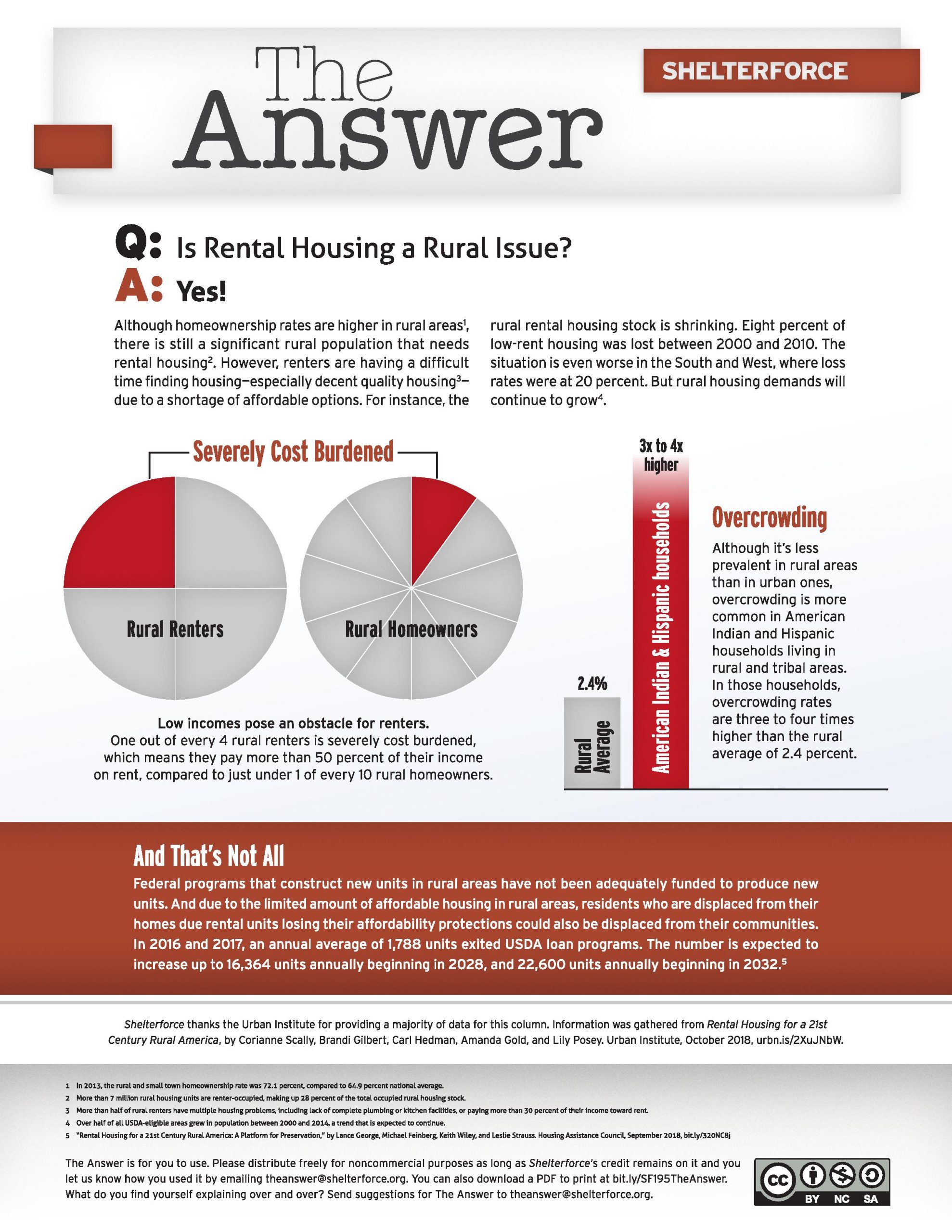
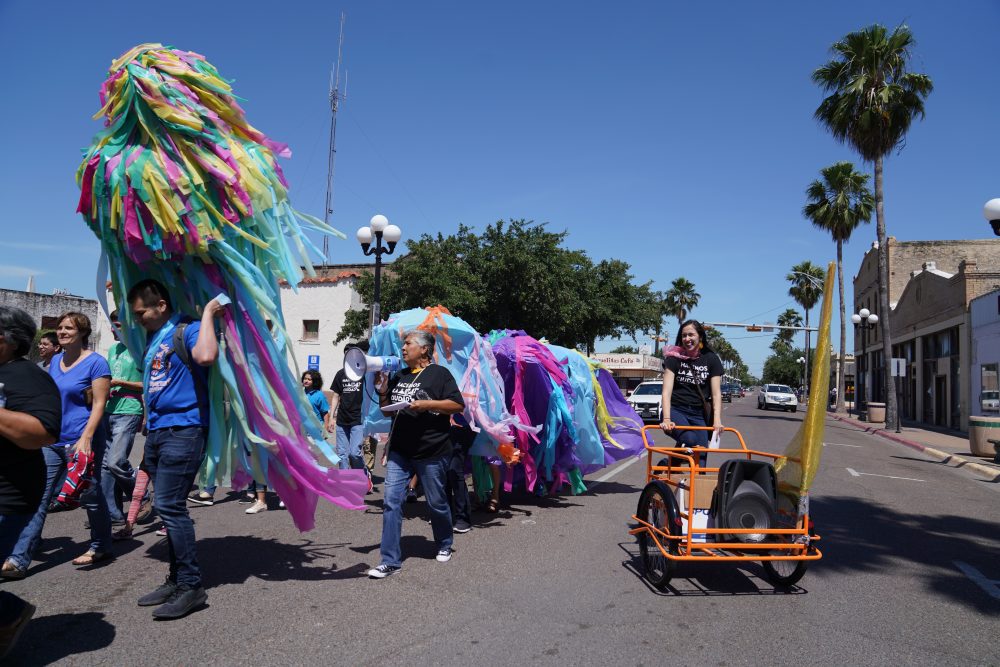

Comments